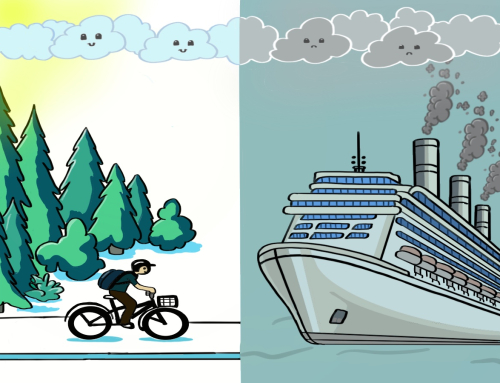By Tyler Folts
Hiking technology has continued to improve over time with a focus on lightweight, waterproof and long lasting gear.
Different designs and materials continue to advance products in the hiking market.
Gore Tex is an Important Piece of Technology
One product that has helped with this is Gore Tex. Gore Tex products are made with polymer polytetrafluoroethylene. It was discovered by Bob Gore in 1969 when doing experiments with heated rods of polytetrafluoroethylene.
The company began selling commercial products in 1976 and continues to improve their designs and expand their products.
The membrane made from the polymer has pores that are small enough to block water from entering, but large enough so that water vapor is still able to escape. This makes the products water resistant and extremely breathable.
Due to the utility of Gore Tex, many hiking brands have incorporated it into their products. However, it is also detrimental to the environment.
These products are made from petroleum based sources which are a cause of climate change. They are also extremely durable which means they will not biodegrade for centuries.
Other Equipment Continues to Advance
A second innovation is the switch from leather hiking boots to lightweight runners. As technology improves, leather boots have begun to fade out of popularity.
Leather hiking boots were heavy and had little to no breathability. Hiking boots are now made with synthetic fabrics that make them lighter, yet still breathable and waterproof.
Water filters have also continued to improve. Though not commonly used until the 1970’s, water filters gained popularity in the 1980’s due to their portability and the acknowledgement of waterborne illnesses like giardia.
Previously, water filters were large and bulky, making them difficult to bring on a hike. Through the use of different filtering cores and advances in technology, water filters can now come in the form of straws that are placed directly into water.
Another innovative piece of technology is the utilization of Global Positioning Systems or GPS. As smartphones continue to work their way into our lives, various apps have allowed hikers to track themselves on trails.
This allows hikers to be sure of their progress as long as they have cell phone service. It also allows hikers to follow the trail more closely with less fear of getting lost.
Lastly, backpacks themselves have continued to advance. Previously, backpacks had frames, usually external to the pack, that while supportive, were also heavy.
Backpacks now are frameless, but the materials they are made of provide the support needed and are often accompanied with a hip belt to alleviate pressure from the hiker’s back.
Advancements in technology continue to change the way we hike. Different materials and improvement in products has greatly progressed the world of hiking, continuing to make the activity more accessible and safe.






